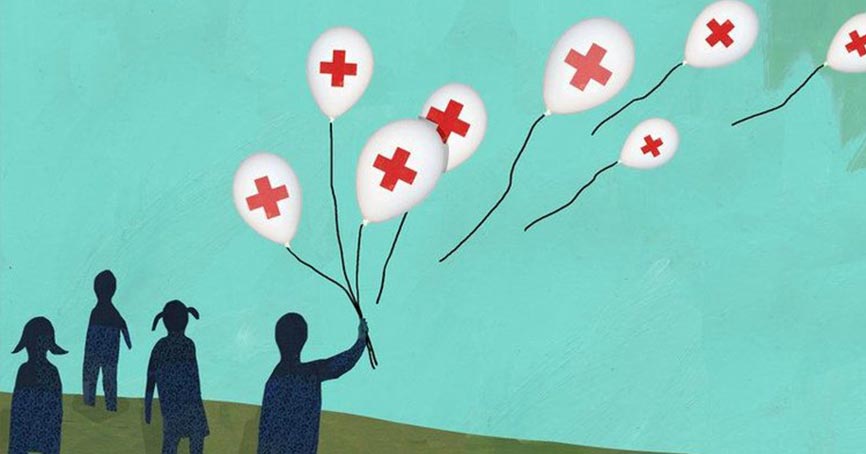Pneumonia claims more lives than any other disease in the developing world for children and adults alike. However, the good news is that it is also considered to be global health's most solvable problem. However, one of the most significant drawbacks is that we confuse pneumonia to be normal flu.
What is Pneumonia?
Pneumonia is an infection of the lungs that starts with virus, fungi or bacteria. A severe disease, this condition leads to the inflammation of the lungs, i.e., alveoli. This condition causes the tiny air sacs inside the lungs to fill with fluid or pus.
Pneumonia can happen to anyone, from young and healthy people to older adults and infants. However, older adults, infants and those with an impaired immune system are at a higher risk of contracting the disease.
Do I have Pneumonia, Or is it a Flu?
Symptoms of the two are so similar that people often confuse pneumonia to be flu. To identify pneumonia, there are a few signs that one must identify. Some of the signs that one must keep noticing to identify whether it is pneumonia or the flu are mentioned below.
A cough
The symptoms of pneumonia include both dry cough and a sputum-producing cough, which solely depends on the type of pneumonia. Mostly, people with bacterial pneumonia will frequently have a phlegmy kind of cough where they would have a dirty, thick and ugly cough with lots of mucus.
On the contrary, viral pneumonia produces less phlegm, and a few people may not produce any phlegm at all.
In the flu, cough is not that worse.
Fever
When the body temperature elevates, it is frequently associated with viral and bacterial pneumonia. However, even a case of low temperature can be a sign of bacterial pneumonia. Moreover, people with normal temperatures may too contract pneumonia.
People suffering from viral pneumonia are at a higher risk of contracting bacterial pneumonia.
Fever is usually lower in case of flu.
Shivering
Shivering or chills down the body is a big sign of pneumonia, and this is different from the goosebumps one gets when the temperature drops down. Chills related to pneumonia come on really quickly and most of the times are really intense.
Shivering of this type comes with fever and
signals bacteria growth in the bloodstream. It is different from the normal shivers that one may have. Lips might turn bluish.
Shortness of Breath
Difficulty in breathing is one of the biggest signs of pneumonia. The breathing rate may increase, and as one tries to increase the breathing rate to compensate, it can leave the patient feeling short of breath.
If the infection affects lung function, they may not be able to deliver enough oxygen to the blood. This can affect the body so negatively that one may require supplemental oxygen or treatments to assist in breathing. with pneumonia. In some of the severe cases, the doctor may insert a tube into the airway to assist the person in breathing.
Chest Pain/ Discomfort
When the body has to put in extra efforts to breathe or cough, the muscles get exhausted. This, in turn, hurts even normal breathing or coughing. Also, the body might have discomfort in the chest area due to the infection in the lungs.
The sharp chest pain could also be due to the inflammatory effects of pneumonia throughout the body. However, this needs to be taken seriously because, in some instances, pneumonia can also lead to a heart attack.
Sweaty Skin
As the body fights hard against pneumonia, one may notice some sweating or skin that feels clammy to touch. In case one notices any such symptom, it could imply to be sepsis. Sepsis is a complication of pneumonia that usually occurs in response to bacteria in the blood.
Dizziness
As pneumonia aggravates and turns into sepsis, the body's immune system goes haywire. The body reacts in many different ways, i.e., blood pressure drops, urine output is low, and the mental capacity is affected too. One may feel dizzy or confused, and it is a big sign that one needs medical attention.
This usually signifies that pneumonia is getting out of control, and severe action needs to be taken right away.
Symptoms in Children
Just as adults show symptoms like fever, chills and difficulty in breathing, so do infants, toddlers and young children. Children with pneumonia who have difficulty in breathing may have blue fingernails or toenails. In case something like this happens, consult the doctor immediately.
However, besides these major symptoms, there may be certain symptoms that may not be easily noticeable.
Watch out the child to understand his appetite, see if the child is feeding poorly or is becoming dehydrated quite frequently. While children have a loss of appetite, babies and toddlers cry more than the usual.
Also, look out for signs of abdominal pain or vomiting in kids and notice if they lack energy. Lethargy and tiredness are one of the biggest indicators of pneumonia.
If timely care and medications are provided, pneumonia is curable and may not do much damage to the body as well. If there are symptoms of pneumonia, one must see a doctor immediately.

 Jun 03, 2019
Jun 03, 2019
 May 30, 2018
May 30, 2018 May 10, 2018
May 10, 2018 May 17, 2018
May 17, 2018